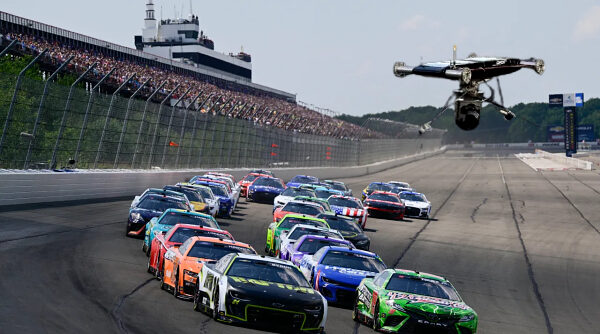The Truth About NASCAR’s Viewership

Over the past two decades, a notable decline in the audience for televised sports, including football and basketball, has been observed. Tennis and golf stats for viewership are down 52%, and baseball, which was once the most-watched sport of all in the US, is among the hardest hit. Even the World Series, the highlight of baseball season, suffered a 23% decline in 2023. This unfortunate trend indicates a mix of factors involving financial commitments, jobs, and advancing technology that altogether go beyond affecting just one sport. Thus, NASCAR is not the only sport suffering from a declining audience, despite what the cynics would like you to believe. More recently, politics invading sports has added to this list and has given viewers an additional reason to turn away. And again, this is not just specific to NASCAR.
Economic Factors: The rising costs of cable and streaming packages have increasingly priced out average consumers. As subscriptions become more expensive, people are less willing to invest in sports packages, leading to reduced viewership.
Shift in Attention Spans: The advent of social media has significantly impacted the attention span of the general population. With an ongoing increase in quick, engaging content, many find it challenging to remain focused on lengthy sporting events.
Lifestyle Changes: The past 20 years have seen a vast transformation in work and life patterns, with more people working non-traditional hours, including weekends and evenings. This shift means fewer people are available to watch sports live, instead opting to catch up on scores and highlights via their smartphones.
Generational Shift: Older, dedicated fans of sports like NASCAR are gradually being replaced by a younger demographic with different interests and values. The attention span issue, combined with a growing consciousness about environmental issues, has led many young people to disengage from sports that they perceive as environmentally unfriendly.
Certainly, the world has undergone a lot of changes since NASCAR enjoyed its heyday 20 years ago, and almost every aspect of life has been affected in one way or another. So, why is it so hard for people to believe that sports and the way we view them have changed, too? Moreover, why do cynics of NASCAR, including some media outlets, insist on singling it out and pushing a false narrative? And perhaps the biggest question of all is: why are viewership stats based ONLY on the American audience? Most stats do not take into consideration the rest of the viewing world, which seemingly is growing based on annual social media posts.
Recent discussions, including a Wall Street Journal article, have highlighted NASCAR’s decline in audience, conveniently eliminating the obvious reasons and instead focusing on a lack of interest in the sport, as well as NASCAR’s strategy to counteract it. This strategy includes DEI (Diversity, Equity, and Inclusion), a growing trend that has been permeating ALL sports. And as with most sports, it is being met with mixed reactions. This resistance is not necessarily rooted in racism but may stem from the perception that the sport is moving away from its traditional values and identity.
NASCAR is also focused on expanding its audience with a broadcast deal. Beginning in 2025, the deal will stretch the Cup Series season over Fox, Amazon Prime, TNT, and NBC. The unique arrangement will start with 14 races split between Fox and the cable affiliate Fox Sports 1, then five races on Amazon Prime’s streaming service, and five on Warner Bros. However, many viewers will find this piecemeal arrangement difficult to remember and execute, particularly if they don’t get all the channels or services. Instead of bringing viewers together, it seems this very expensive venture will only serve to divide them further. And international viewers truly don’t have a hope in hell. So, will we see a further decline in audience? It’s certainly possible, given this haphazard approach.
NASCAR would have been better off having approached the issue by taking control of their broadcasting rights, just as F1 did. F1TV, available on the F1 website and the app, provides full live sessions with zero commercial breaks and allows fans to switch between the live feed and ANY in-car camera during a race. It also allows for on-screen telemetry, full race replays, and even historical race replays. For viewers who don’t like watching on small screens, such as a phone or laptop, the broadcast can easily be cast to a TV. The price is less than paying for several cable channels and streaming services that will be required to watch an entire NASCAR season, starting next year.
In addition to fixing the broadcast situation, NASCAR and other sports need to find a way to broaden their appeal without alienating their core fan base. This delicate balance requires understanding the evolving preferences of a diverse audience while maintaining the essence of the sport.
One potential approach could be to integrate more technology and interactive elements into the viewing experience, catering to shorter attention spans and tech-savvy younger viewers.
Conclusion
The decline in televised sports viewership is a multifaceted issue that cannot be attributed to a single cause or sport. It reflects broader societal changes and poses a significant challenge for sports organizations. Understanding these complexities is crucial for developing strategies that resonate with both traditional and new audiences. For NASCAR specifically, there needs to be a more streamlined approach to broadcasting starting in 2025. If inclusion was what they were aiming for, they have created the exact opposite with this patchwork streaming deal. Instead of drawing viewers, it has the potential to create more of an exodus.




